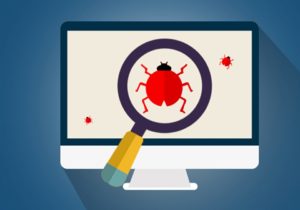 The increasing dominance of web and mobile applications is increasing complexity for organizations—and the software teams charged with ensuring application functionality and quality. The number of critical business functions processed via a browser or mobile device is escalating, the pace of updates is accelerating, and inaccurate results, aberrant behaviors, and security flaws can all be absurdly costly.
The increasing dominance of web and mobile applications is increasing complexity for organizations—and the software teams charged with ensuring application functionality and quality. The number of critical business functions processed via a browser or mobile device is escalating, the pace of updates is accelerating, and inaccurate results, aberrant behaviors, and security flaws can all be absurdly costly.
In such a landscape, organizations literally cannot afford buggy software. Yet, critical flaws continue to plague companies large and small. The hard truth is that current practices—even “modern” ones—often prevent firms from discovering defects as early as they might, increasing the challenge of producing high-quality software. To minimize this problem in an affordable manner, many companies are turning to a hosted solution—Testing as a Service (TaaS)—to boost software testing efforts.
Current Approaches Create New Hazards
In web and mobile application development, the race for speed encourages project managers to skip vital quality control operations such as regression testing, to the detriment of the product—and the firm. Modern methodologies can exacerbate the problem, as they are often in direct conflict with quality assurance.
| Consider, for example, the approaches used with most agile methodologies. Testing is embedded within the development cycles, and teams are focused on delivering bursts of tested features and functions that they have committed to provide on schedule. Their attention is focused on meeting short-term commitments.
However, even though the new functionality is tested during the dev cycle, the entire system is often not tested for each deployment. Dev/test/deploy cycles are happening too fast to support the use of traditional testing methods. Manual testing can’t keep up, and fast, frequent, and effective automation becomes the key to achieving quality across the entire system. Yet, many organizations are so deeply focused on meeting the timelines of dev/test/deploy cycles that they can’t allocate the resources (or hire the experts) to develop and deploy automation successfully. TaaS: the Practical Solution for a Big Problem An emerging solution for ensuring software quality—and one that is gaining tremendous momentum—is TaaS. Whether as an interim approach until an organization can modernize its methodologies, or as a permanent solution due to its efficiency, even very large organizations with significant resources are embracing TaaS. In doing so, they ensure software quality while eliminating resource fluctuations and accelerating release cycles. |
The High Cost of Software Failures For anyone following software news, the arguments are compelling for robust system testing—achieved via TaaS if in-house resources are inadequate. Consider these nightmare scenarios, all of which could have been prevented with sufficient system testing.
|
Organizations for which TaaS adoption is most imperative are those for which the pace of technology, paired with the need for continual app and system updates, is preventing in-house teams from staying abreast of testing advances. Management has recognized that system glitches and downtime are too costly to bear, and TaaS is a viable solution.
Orasi recently helped one of its clients adopt TaaS to address significant infrastructure and resource concerns, all of which are compelling arguments for using this approach. This multinational organization runs a customized product ordering system on its public-facing website. Daily updates require some 2,300 tests to be run, per night, on the platforms and devices that customers use on the open Internet. Considerations that favored TaaS adoption included:
- The firm had no existing lab or processes to perform sufficiently broad validation of the public-facing app’s behaviors across all platforms and devices.
- Management felt it was inefficient to purchase, deploy, and maintain/update the necessary automation technologies and environments to keep pace with constantly changing requirements.
- In-house teams lacked the management and process skills to achieve goals, and adding/managing more highly skilled resources was cost prohibitive.
After considering all the skills and infrastructure needed, company leadership determined the most economical solution that would ensure quality and accelerate updates was TaaS.
To reap the most benefit, especially when QA is a fundamental challenge, firms considering TaaS should look for offerings that include a comprehensive palette of best practices QA and testing services, as opposed to siloed assistance. Services should include not only setting up and maintaining a dynamically scalable test environment but also creating and updating scripts, running manual and automated tests, and performing other functions common to fully developed in-house testing and QA efforts.
The Final Tally
Organizational leaders may balk at the idea of outsourced testing because they are concerned about cost. This logic is flawed, because there is ample evidence that TaaS can significantly reduce the risk of software failure, which has become too expensive to bear.
In today’s market, QA is invaluable to achieving app success, fostering user loyalty, and reducing the potential for crippling business risk. Not only are customers, brand reputations, and sales volumes in jeopardy, but we have passed the point where code defects are innocuous.
Most cybercriminals now use sophisticated technology to troll the Internet for vulnerabilities. The aberrant system behavior that results from software defects is like a beacon in the night. With so much at stake, and with proven solutions available, the only logical decision is to recognize when help is needed, and to seek it.